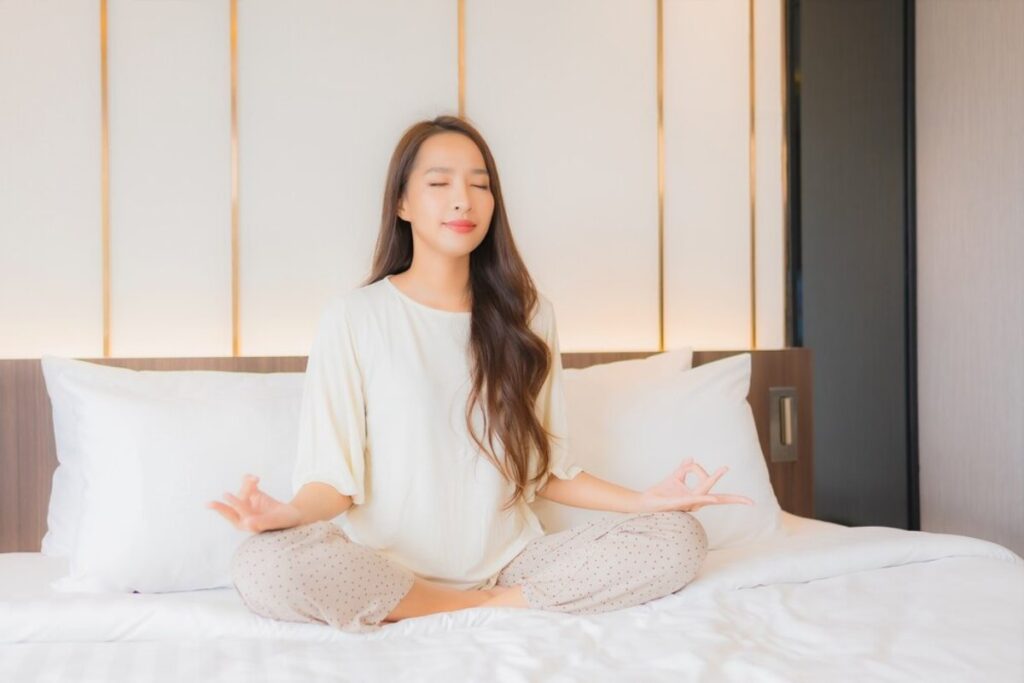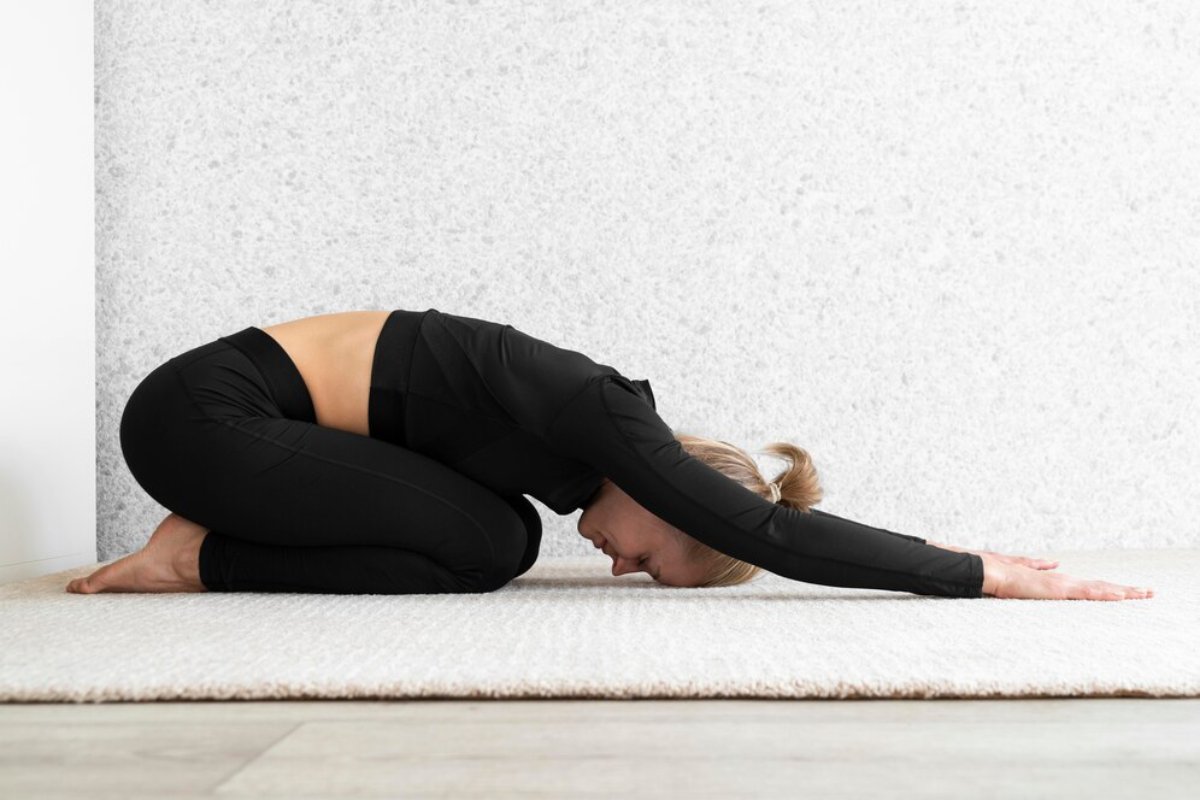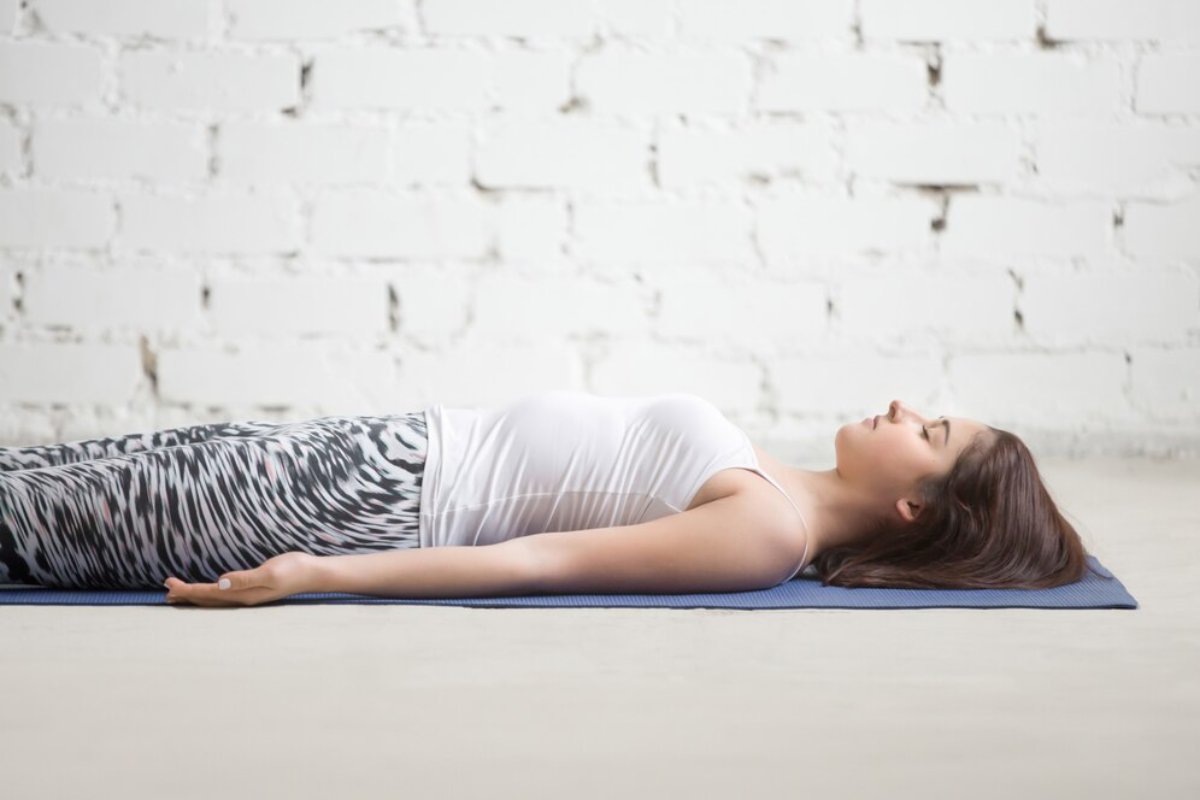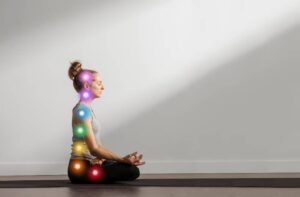The Yoga Blogs

Bedtime Yoga Poses to Calm the Mind
In our always-on culture, that kind of mental peace before bed has the potential to feel rare. Our minds flood with chores and errands. You lie in bed, hoping for sleep, but your mind whirls. Sound familiar?
You’re not alone. Some have trouble relaxing at day’s end, leading to sleepless nights and general malaise. The good news? Bedtime yoga poses could be the relaxing remedy you’re looking for.
Gentle yoga lowers stress. It won’t rile you up, like a tough workout or evening caffeine. In this blog, we’ll look at how bedtime yoga boosts mental clarity. We’ll share useful poses and guide you in creating a simple nighttime routine. This routine will help your mind relax and lead to restful sleep.
Let’s start this journey toward better nights and brighter mornings.
Why Bedtime Yoga Works Wonders for Mental Clarity
The Science Behind It
When your mind is cluttered, your body holds that tension. Stress raises cortisol levels and disrupts sleep. Evening yoga does the opposite. It activates your parasympathetic nervous system, known as the rest-and-digest mode.
A 2020 study in PLOS ONE found that gentle yoga before bed helped participants sleep better. They also felt less anxious after just four weeks. Yoga emphasizes breath and movement. This helps you turn your focus inward. It creates a mental break from your busy day and the need for rest.
It’s Not Just About Stretching
You don’t need to be flexible. Calming yoga is about intention, breath, and gentle movement. It’s a calming practice. It helps you process your day and release it, both physically and emotionally. This prepares you for sleep.
Creating the Ideal Environment for Bedtime Yoga
Before starting the poses, set the right atmosphere. Your space greatly affects how relaxed you feel.
Here’s how to optimise your space:
- Dim the lights or use soft lighting like Himalayan salt lamps or candles.
- Silence your devices or set them to Do Not Disturb mode.
- Use a yoga mat or soft rug — comfort is essential.
- Add calming scents like lavender or chamomile.
- Play soft music or ambient sounds to help you focus.
You only need 10 to 15 minutes. The goal is to shift your mindset and prepare for sleep, not get a workout.
The Best Bedtime Yoga Poses to Calm Your Mind
These poses aim to slow your breathing, release tension, and signal to your brain that it’s time to rest. You can do them in order or choose 2–3 based on your time.

1. Child’s Pose (Balasana)
This comforting posture eases tension in your back, neck, and shoulders.
How to do it:
- Kneel on the floor with your big toes touching and knees apart.
- Lower your torso between your thighs, extending your arms forward or alongside you.
- Rest your forehead on the mat and breathe deeply.
Benefits:
- Calms the mind
- Relieves physical tension
- Encourages inward reflection
Tip: Hold for 1–2 minutes, feeling your breath expand your back.
2. Legs-Up-the-Wall (Viparita Karani)
This gentle pose helps blood flow return to the heart. It also calms an overstimulated nervous system.
How to do it:
- Sit sideways next to a wall and swing your legs up as you lie back.
- Rest your arms beside you, palms up.
- Close your eyes and breathe slowly.
Benefits:
- Reduces fatigue and anxiety
- Improves circulation
- Alleviates lower back strain
Tip: Use a folded blanket or cushion under your hips for comfort.
3. Reclining Bound Angle Pose (Supta Baddha Konasana)
This hip-opening pose helps release pent-up emotions and calm your thoughts.
How to do it:
- Lie on your back.
- Bring the soles of your feet together and let your knees fall open.
- Rest your hands on your belly or by your sides.
Benefits:
- Relieves hip tension
- Opens the chest for deeper breathing
- Promotes relaxation
Tip: Use cushions under your knees if the stretch feels intense.
4. Seated Forward Fold (Paschimottanasana)
This gentle stretch for the hamstrings also helps quiet the mind.
How to do it:
- Sit with your legs extended in front of you.
- Inhale and lengthen your spine, then exhale and fold forward.
- Hold your shins, ankles, or feet wherever feels comfortable.
Benefits:
- Soothes anxiety
- Lengthens the spine and hamstrings
- Encourages introspection
Tip: Keep a slight bend in your knees to avoid strain.
5. Supine Twist (Supta Matsyendrasana)
This spinal twist is great for releasing emotional tension and aiding digestion.
How to do it:
- Lie on your back and hug your knees to your chest.
- Drop both knees to one side while extending your arms out like a T.
- Turn your head in the opposite direction.
Benefits:
- Massage internal organs
- Ease back tension
- Helps declutter the mind
Tip: Stay for 1–2 minutes on each side, focusing on your exhalation.

6. Corpse Pose (Savasana)
The final pose in calming yoga, Savasana, lets your body and mind absorb the benefits.
How to do it:
- Lie flat on your back with legs slightly apart and arms by your side.
- Let your body feel heavy and sink into the mat.
- Focus on your breath or use a guided meditation.
Benefits:
- Promotes deep relaxation
- Integrates your practice
- Prepares your mind for sleep
Tip: If lying flat is uncomfortable, support your knees with a bolster or pillow.
Integrating Yoga into Your Night-time Routine
Consistency is key. Make yoga part of your wind-down ritual. You don’t need to do every pose every night. The goal is to link yoga with mental calm and sleep preparation.
Simple nightly routine:
- Turn off devices at least 30 minutes before bed.
- Dim the lights and create a calming environment.
- Change into comfy clothes or pyjamas.
- Spend 10–15 minutes doing 3–4 calming poses.
- Lie in Savasana or listen to a short meditation.
Over time, your body and mind will learn to recognise this routine as a signal to wind down. It’s like sending a love letter to your nervous system, saying, “You’re safe now. You can rest.”
Beyond the Poses: Additional Tips for Mental Clarity
While yoga is powerful, pairing it with other habits can enhance its effects:
- Journaling before bed: Write down your worries to keep them from looping in your head.
- Deep breathing or meditation: Even five minutes can shift your mental state.
- No caffeine after 4 pm: It affects your sleep more than you think.
- Create a sleep sanctuary: Keep your bedroom cool, quiet, and clutter-free.
These small changes and your yoga routine create a strong base for a calmer, clearer mind.
Your Sanctuary Awaits
In our fast-paced world, slowing down is pretty revolutionary. Bedtime yoga poses are also more than just stretches; they encourage you to stop and listen. They remind your mind and body that rest isn’t a reward. It’s necessary for a clear head, joy, and health. You need these to keep performing well.
So tonight, when your thoughts begin racing and the muscles in your body tense up, pause. Roll out your mat, take a deep breath, and let your journey lead.
Ready to begin your nightly trip to clarity? Please post below and let us know your favourite pose or routine. If you liked this article, please share it. Your help lets us keep hiding external walls in winter. Oh, and don’t forget to sign up here to get the briefing delivered directly to your inbox.
Get good sleep — your mind will thank you in the morning.









